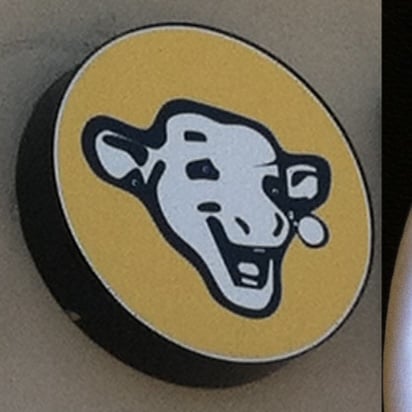

Ah, I’m lucky then, here in the Netherlands they sell all kinds of nice syrups in the supermarket! Still looking for a nice cola taste, but otherwise I have cherry, tropical fruit, orange, pear… Oh, and green iced tea, which tastes great too.
Putting toothpaste on your sandwich is not recommended. Not even by dentists.


Ah, I’m lucky then, here in the Netherlands they sell all kinds of nice syrups in the supermarket! Still looking for a nice cola taste, but otherwise I have cherry, tropical fruit, orange, pear… Oh, and green iced tea, which tastes great too.


What do you reckon made you stop using it? What are you drinking now?


All right, so thinking in solutions here—sandboxed applications, no password prompt for updates, and a more alert-y warning when a password prompt is shown. Surely there’s a distro that does the first two things, already?
And also, if no password is needed for updates, the average user will never see a password prompt. Which would make a clandestine .sh file with a password pop-up inherently more worrying.
I’ll have a look-see at some modern distros, I’m pretty sure the no-password-updates is quite normal these days. Also, that does seem to remove some of the necessity of sandboxed applications, if all applications are installed though the official repositories.


The way Windows handles it is that if updates are coming in through “secure” channels (official OS updates, Store application updates, updates to applications that do not touch any protected areas), administrator permissions are just never required.
As far as I know, that works the same in Linux. Updates come in through the official repository, and you can easily set it up so that no password prompt is needed to have the update install. I imagine many user-friendly distributions do that. Of course, you will need to really get it into the head of new users that they only install things through the package manager and never through the command line.
The UAC prompt has a very specific design and will warn you with an orange colour band if the application is not signed with appropriate certificates. If it’s a suspected dangerous application, the band will be red.
Well, that sounds like something that shouldn’t be too hard to set up on Linux. Something like “you’re installing something that’s not from our official repo… You sure bro?”
in Linux everything is dropped, based on type, to just a couple of “centralised” folders, right?
I’m not so sure if that is true, actually! Sandboxed applications are very much a thing in Linux, and immutable distributions are an extra protection against unwanted tampering.
(I’m not sure if sandboxed is the term here, I’ll be honest. But you know the concept I mean.)


You do have a point—Linux does not warn users against running superuser commands constantly and naggingly. Also not the beginner-friendly distros like Zorin, Mint and Ubuntu (as far as I know).
To me that’s fine, because I know not to just run any command, but my grandma who gets an email from a trustworthy-sounding person telling them to run “sudo install this keyboard logger and Rustdesk scripted installer” will not know better.
So then that begs the question, given you seem to know something about it: how should this be addressed? (I assume you know something about this—I don’t even know what an UAC prompt is.)
On the other hand: How does Windows stop users from running the .exe file a trustworthy-sounding person emailed them? You could argue that’s easier to ask people to do than to open the terminal and write a command in there.


And rightly so! 😇


Hey, at least they got it to work! Progress has to start somewhere.


This was a nice read and the theme looks really nice. Great job on rewriting so much and improving the documentation.


Mmm, that is true. But honestly, the amount of carbonation I do get is enough, for me. Just enough to make it taste a bit fancier.


Oh whoops, thanks for the correction!


Sounds like… Dykes. See: The Netherlands.


My Sodastream has saved me a lot of money—with some cheap syrups I just make very inexpensive nice drinks. Especially considering I got mine second-hand and refill it through a local guy who fills the cylinders for half the price. I suppose I could save even more money if I figure out how to refill the cylinders myself.


Though you could say that all those things influence the collective more than the individual, of course.
(Of course, being able to do this stuff in the first place is a testament to the freedom Linux provides.)
Oof, I feel you on the video call thing. I use a semi-complicated setup of switching between (7.1 surround) speakers and headphones, plugged into two separate sound cards, too… And a Zoom recorder connected with USB for sound, and Droidcam for a webcam. So many possible points of failure. I had it all working during COVID, but when I have to video call now, I just install the needed app and use my phone 🙈
Great sticker material, too.


Autocorrect, probably?


Ha! I’ll live 😅 And there’s plenty of modding things I can still buy for it… Keycaps, switches, foam to fill it with…


Just the ones that come with it, for now… I’m watching the online second hand market place of my country for offerings of switches, as I don’t want to spend too much. And it’s better for the environment, too! I’ve heard pretty much all keycaps by the HMX brand are good, so that’s what I have a search alert for.
Thankfully, I’m not even sure how either of those taste 😅